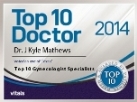In the U.S. and Canada, more than 6 million women are affected by endometriosis
Endometriosis is a chronic condition that occurs when the endometrium, which is the tissue that lines the uterus, grows in other parts of the pelvic cavity. This tissue, which is sometimes called growths or implants, is most commonly found growing on the ovaries, in the fallopian tubes, in the pelvic cavity lining or on the outer areas of the bladder, uterus, or even the intestines or rectum.
As the tissue grows in these areas, implants or growths develop, and these lesions can cause pain and other problems that may worsen over time. Each month, during the menstrual cycle, these implants respond the same way that the endometrium, or uterine lining, responds during the cycle. There is one important difference—endometrial implants or lesions develop, but do not get shed like the uterine lining, so they simply continue to grow.
The result of this buildup of tissue is the painful and problematic condition, endometriosis. Dr. J. Kyle Mathews, an experienced North Dallas gynecologist, has the expertise needed to both diagnose and treat this sometimes elusive condition.
Symptoms of endometriosis
The most common symptom of endometriosis is pain, which may include: painful cramping during menstruation; lower back pain; pelvic pain; pain during sex; pain during bowel movements or when urinating during menstruation. Other symptoms can occur, including: infertility issues, digestive issues like constipation, bloating, diarrhea or nausea.
Risk factors for endometriosis
Age is the biggest risk factor for endometriosis. Women in their childbearing years, which is any time between puberty and menopause, are at risk, with women in their thirties and forties at the highest risk. Women who are more likely to get endometriosis include: women who haven’t had children; women with short (twenty-seven days or fewer) or long (more than 7 days) menstrual cycles; women who have a mother or sister with endometriosis, or women who have structural problems or health issues that would block or impede normal menstrual flow.
Diagnosing endometriosis
Endometriosis may be difficult to diagnose, so Dr. Mathews takes a thorough health history and performs a pelvic examination. He may also do a laparoscopy or ultrasound to look for implants, as this is the only proven way to diagnose endometriosis.
Treating endometriosis
Treatment options for endometriosis include: over-the-counter or prescription medication, hormone therapy and minimally invasive gynecologic surgery.
There is no cure for endometriosis, but Dr. Mathews has the knowledge and experience to provide women with the expert diagnosis and treatment services they need to improve their health. Contact us to make an appointment at Plano Urogynecology Associates.











